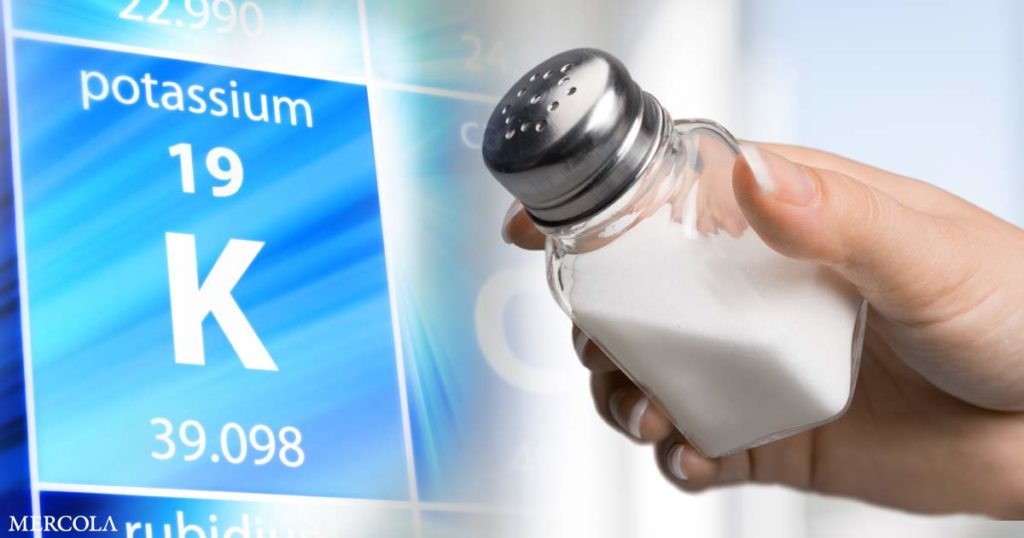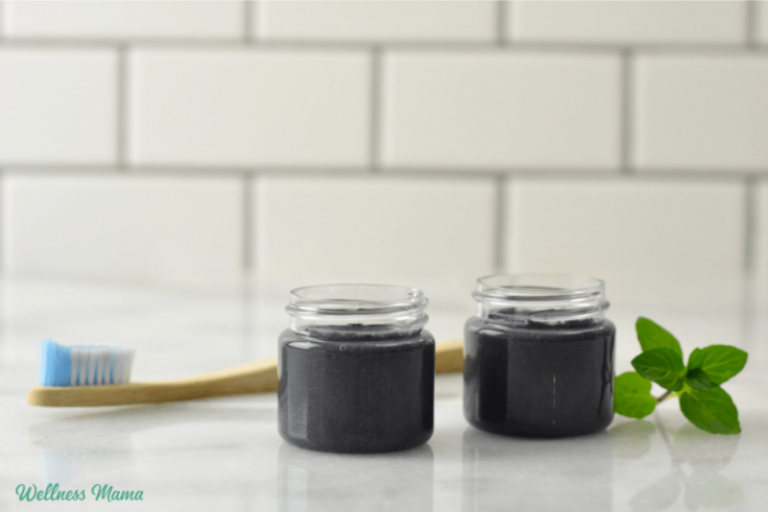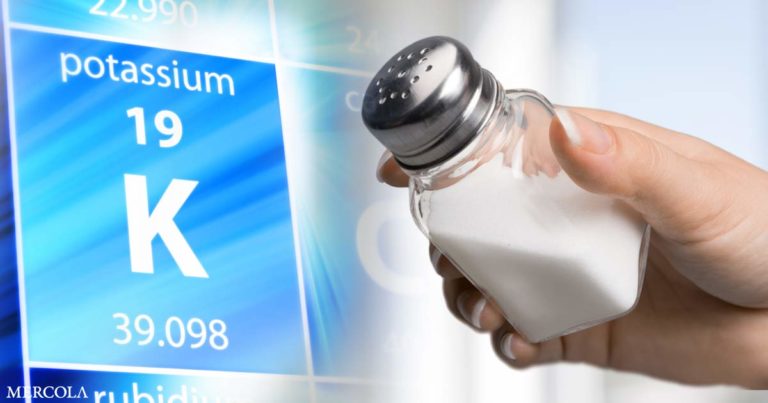
A recent study published in the New England Journal of Medicine1 revealed that those who used a potassium-fortified salt alternative had a reduced rate of cardiovascular events and death than those who used ordinary salt. 75 percent sodium chloride and 25% potassium chloride made up the salt substitute.
In the discussion, we talk about how salt has been demonized in recent decades, and how this may have influenced the development of chronic conditions like high blood pressure and obesity.
The interview took place in 2017, shortly after his book “The Salt Fix: Why the Experts Got It All Wrong — and How Eating More Might Save Your Life” was published.
Most people nowadays consider salt to be a seasoning for their cuisine. Salt, on the other hand, was historically required for food preservation and was integrally linked to trade. Salary is derived from the word salt, which was a highly prized commodity.
Potassium Salt Substitute Lowered Cardiovascular Events
The first Dietary Approaches to Stop Hypertension (DASH), was distributed in 1997 in the New England Journal of Medicine.5 The scientists enlisted 459 grown-ups who had circulatory strain of under 160/95. In the wake of eating a control diet low in foods grown from the ground and dairy items for a very long time, they were haphazardly appointed to one of three eating regimens.
One gathering of members ate an eating routine wealthy in leafy foods, the second ate the control diet and the third ate a mix of the two. The scientists closed, An eating routine wealthy in organic products, vegetables and low-fat dairy food sources and with diminished immersed and all out fat can generously bring down blood pressure.6 At the hour of distribution, public rules additionally suggested a low-salt eating regimen.
The intercession diet had a salt substance of around 3 grams each day, with more elevated levels of potassium, magnesium and calcium. The specialists composed, Nonetheless, known eating regimen related determinants of circulatory strain (sodium chloride, body weight and liquor) couldn’t have represented the decreases in pulse, since changes in these potential confounders were little and comparable for all the diets.7
At the end of the day, they observed that low-salt eating regimens we’re reasonable not liable for the decreases in pulse that were found in those eating an entire food diet. However, later they composed it was vital that decreases occurred with a sodium admission of around 3 grams each day and utilization of two or less cocktails for every day.8 Twenty years after the fact the eating regimen is as yet thought to be a significant development in healthful science. As indicated by one paper:9
It underscores food sources wealthy in protein, fiber, potassium, magnesium, and calcium, like products of the soil, beans, nuts, entire grains, and low-fat dairy. It likewise restricts food varieties high in soaked fat and sugar. Run is certifiably not a diminished sodium diet, yet its impact is upgraded by additionally bringing down sodium consumption.
However it has been the salt utilization in the DASH diet that has gotten the best consideration. The new information are from the Salt Substitute and Stroke Study10 which looked to decide whether utilizing a salt substitute that contained 75% sodium and 25% potassium could affect the pace of major cardiovascular occasions, stroke and demise.
While the endpoint of the DASH diet was to gauge pulse decrease in few members, the Salt Substitute review affected individuals in 600 towns across rustic China and utilized endpoint estimations that obviously affected wellbeing.
The analysts picked members who were 60 years of age and more seasoned and had hypertension. Others were picked in light of the fact that they had a background marked by stroke. The specialists haphazardly appointed towns to utilize a salt substitute or customary salt11 and followed up for a mean of 4.74 years.12
Those devouring the salt substitute had a lower pace of stroke, major cardiovascular occasions and demise. The pace of hyperkalemia, or significant degrees of potassium in the blood, was just somewhat higher in those utilizing a salt substitute.13 While these outcomes are empowering, the specialists didn’t gauge whether the members were first inadequate in potassium, additionally vital for cardiovascular wellbeing.
Low-Salt Recommendations Likely Does More Harm
The first investigations connecting a low salt eating routine to hypertension started during the 1940s with Dr. Lewis Dahl. At the hour of his demise, he was head of staff at the Hospital of Medical Research Center, Brookhaven National Laboratory, New York. In 1956 he reasoned that a high-salt eating routine was a significant variable in high blood pressure.14
In my meeting with DiNicolantonio, he alluded to Dahl as the Ancel Keys of salt,15 concerning the manner in which Keys and Dahls studies were structured.16,17 The technique behind Keys study was truly defective, with the greatest blemish being that Keys carefully chose the nations he used to help his theory.
As per DiNicolantonio, Dahl did practically exactly the same thing as he picked five populaces from which he would define a straight boundary from hypertension to salt admission. DiNicolantonio commented:18
“I don’t have a clue what was in the water during the 1950s, yet these specialists appeared to pick only five or six populaces that fit their theory, plot it out and show the affiliation essentially observing what they needed to find.”
DiNicolantonio proceeded by depicting the 1988 Intersalt study19 in which 52 populaces were assessed for the connection between urinary electrolyte discharge and circulatory strain estimations. Remembered for the 52 populaces were four crude societies that didn’t burn-through salt.
An investigation of the information showed that when the four ancestral populaces are remembered for the aggregate, the general outcomes show that salt decrease can assist lower with blooding pressure. In any case, note that while those populaces didn’t eat salt, they had an eating routine with undeniable degrees of potassium and magnesium. The social class additionally practiced more, drank no liquor and ate no food sources with handled sugar.
At the point when that gathering was eliminated from the information, it showed that the lower levels of salt didn’t positively affect circulatory strain. One reason this might happen is on the grounds that when salt is cut from the body, insulin opposition rises.
The mix of Dahls study and the DASH concentrate on lay the fault for hypertension, diabetes and kidney sickness on salt. DiNicolantonio remarked on the connection between the review subsidizing sources and the results:20
At the point when you check out the information and take a gander at concentrates on that didn’t have any struggles with the food business There was one deliberate audit distributed a couple of years prior and it in a real sense showed the contrary outcomes.
The investigations that didn’t have any struggles, fundamentally 80% showed that sugar is related with heftiness and putting on weight. Also, obviously 80% of the investigations that had clashes with the business showed precisely the inverse, which in a real sense demonstrates that totally clashes with the sugar business and food industry can influence logical outcomes. That is what was happening here.
Conditions That Require Greater Attention to Sodium Levels
Probably the most ideal way I have found to influence my mitochondrial wellbeing is through a recurrent ketogenic diet. At the point when certain individuals initially start this change to ketosis, they can foster something many refer to as keto influenza. This is frequently a momentary blend of indications that incorporate queasiness, exhaustion and headaches.21
DiNicolantonio depicts the course of how going into ketosis can exhaust your assortment of salt, and subsequently bring about a portion of these manifestations. He clarifies that your salt levels straightforwardly control levels of magnesium and calcium.22
As sugars are cut from the eating routine, it decreases the measure of insulin in the body, raises glucagon and creates adversely charged ketone bodies. Every one of these cycles assume a part in bringing down sodium levels. DiNicolantonio additionally calls attention to that there are sure subpopulations of individuals who are more salt touchy, for example, those with:
High aldosterone levels This chemical assists the body with holding salt by diminishing the sum discharged in the kidneys.23 simultaneously it makes the body eliminate more magnesium.24 This can occur with a harmless growth emitting aldosterone.
Cushing’s condition In this issue, your body makes an excess of cortisol. This can mirror the activities of aldosterone and cause the body to keep an excess of sodium and discharge more potassium.25
Liddles Syndrome In this uncommon condition individuals hold a lot of salt.26
A sound body has a salt thermostat27 that helps control how much salt you ought to eat. It fundamentally is tied in with paying attention to your own salt longings. Nonetheless, as DiNicolantonio depicts, there are ailments that add to helpless sodium ingestion or sodium misfortune. Those include:
Entrail sicknesses People with ulcerative colitis, celiac infection and peevish inside disorder don’t ingest salt well. People who have had careful mediation in their stomach may likewise have helpless salt assimilation. This could incorporate the people who have had bariatric medical procedure or had some portion of their digestive organs eliminated from malignant growth.
Adrenal deficiency This is likewise called Addison’s infection and happens when the adrenal organs don’t make enough cortisol.28 DiNicolantonio discussed a paper distributed in JAMA during the 1940s portraying a youngster who was eating a great deal of salt to where the guardians hospitalized the kid. The youngster wound up biting the dust a couple of days after the fact from salt misfortune. Individuals with adrenal inadequacy don’t retain sodium well.
Hypothyroidism Thyroid chemicals assist with controlling digestion and the kidneys capacity to resorb salt.29 People with some kind of thyroid brokenness may require more salt.
Rest apnea People with rest apnea might be losing double the measure of salt around evening time, which is the reason they’re regularly up during the night to pee. The break in breathing can make blood enter the chest, which expands focal pulse. This fools the body into thinking there is an over-burden of salt and causes the kidneys to discharge more salt and along these lines more pee during the evening.
Kidney illnesses Individuals with polycystic kidney sickness, glomerulonephritis and interstitial harm to the tubules can contrarily influence salt misfortune, leaving more elevated levels of sodium in the body.
Low Sodium Level Impacts Exercise Performance
DiNicolantonio considers salt the 6th variable in fitness.30 He portrayed how Ancel Keys found the advantages of salt for people who work out. During the 1940s Keys showed that people who work out in the hotness without sufficient measures of salt have a 10-overlap expansion in the possible danger of hotness stroke.
As individuals are searching for ways of further developing blood dissemination, DiNicolantonio accepts that taking a touch of salt before practice is probably the most ideal way of further developing execution and decrease the danger of lack of hydration. Prior to working out he takes a half-teaspoon of salt with sufficient lemon juice to cover the flavor of the salt and 2 ounces of water. He utilizes this around 20 minutes prior to working out.
The advantages are that you quickly start expanding blood volume, flow and lessening pulse. Individuals who have satisfactory sodium levels additionally discharge more hotness since salt is a decent vasodilator and permits hotness to get away from the body. As the hotness disperses during exercise it lessens your center internal heat level.
Overtraining disorder is a test looked by numerous competitors. The writing depicts it as a maladapted reaction to unnecessary exercise without satisfactory rest, bringing about irritations of different body frameworks combined with disposition changes.31 DiNicolantonio portrays the impact salt has on overtraining syndrome:32
Overtraining disorder is in a real sense salt inadequacy in the tissues. At the point when your muscles are simply losing salt it’s the reason you get muscle fits, and jerks and in the event that you add salt back to the eating regimen you can totally dispose of overtraining condition.
Think about Your Salt Intake
As DiNicolantonio calls attention to, our precursors ate substantially more salt than we do, possibly up to multiple times more than we devour today.33 From an authentic point of view note that society didn’t experience the ill effects of the persistent sicknesses that are additionally normal today. He trusts that the ascent in hypertension, diabetes and weight matches lower salt eating regimens and may have been a supporter of the advancement of these infections.
In his examination DiNicolantonio finds that the normal American burns-through around 3,400 milligrams of sodium every day. He doesn’t trust that an individual with sound kidneys can burn-through a lot of salt, since the kidneys will flush out the overabundance sum.
It’s essential to consider the wellspring of your sodium since ocean salt from the cutting edge seas contains present day pollutants,34 like plastics and hints of weighty metals when contrasted with Himalayan Sea salt or Redmond salt from antiquated seas.
DiNicolantonio likewise brings up that its imperative to get sufficient salt every day on the grounds that a sodium lack can decrease nutrient C ingestion, which in a roundabout way influences bone wellbeing and strength because of the resultant nutrient C deficiency.35 The chloride in salt is additionally an essential piece of hydrochloric corrosive, which is a part of how food is separated in the stomach.
One variable in lower measures of hydrochloric corrosive in the stomach, which adds to indigestion and gastroesophageal reflux sickness, is there may not be sufficient salt to deliver enough hydrochloric corrosive. Essentially normalizing your salt admission is an exemplary illustration of how basic systems extensively affect wellbeing and health.
Wellness Chat



